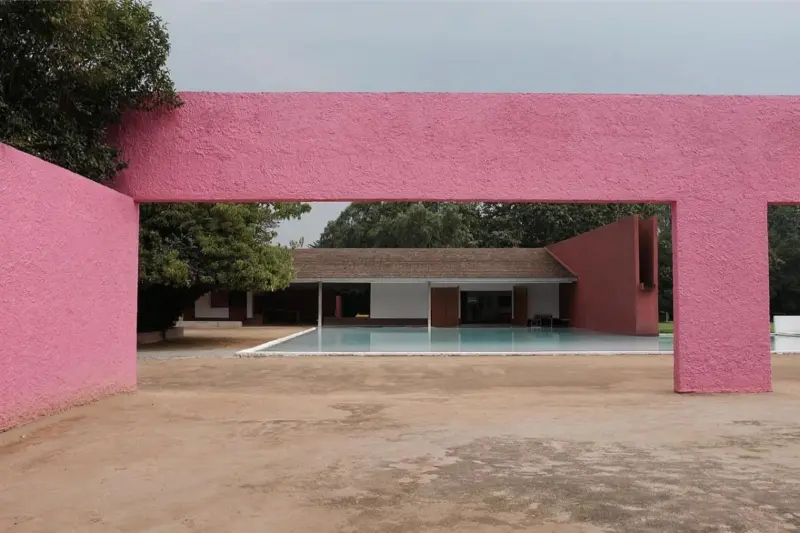While visiting Mexico City, you might feel an urge to take a break from the dense bustle of urban life. When you do, it is worth heading north to a spot that used to be outside of the city, but has since been consumed by it. There you will find Cuadra San Cristóbal, a famous estate designed by Luis Barragán and Andrés Casillas.
Although the surroundings are no longer rural, within these bright pink walls, it is easy to forget how the city has encroached upon the countryside, or how the present has swallowed up the past.
The Project

In the 1960s, Equestrian Folke Egerström commissioned architects Luis Barragán and Andrés Casillas to design an equestrian estate in the Los Clubes subdivision. At the time, this was a rural area where residents could live the country life while enjoying the amenities of Club Hípico Francés.
The pair conceived a design that would incorporate elements of traditional haciendas and ranches, but express those themes through modern forms. The finished estate includes a residence, granary, stables, paddocks, and a central courtyard, pool and fountain. The design was completed in 1966, with construction beginning in 1967 and finishing in 1968.
The Design

A long, pink stucco wall runs from north to south through the estate. On the west side of the wall, the bedroom wing of the residence can be found, together with a patio and swimming pool. On the east side of the wall are the main living spaces. This is also where one can find the stables and other equestrian amenities.
With so many daily activities taking place outdoors, Barragán and Casillas created a harmonious flow of space, melding architecture and landscaping together into a seamless whole. The rectangular gaps in the dividing wall are high enough to ride a horse through, and ensure that both sides of the estate feel connected.
The central basin evokes the look and feel of an oasis, juxtaposing cool tones and the water’s fluid texture against the hard lines of the surrounding walls. It also served a functional purpose, as the horses could drink from it. As the roar of the fountain could be heard throughout the grounds, it created a sense of continuity and atmosphere.
Today, with the city having taken over the estate’s surroundings, the white noise conveniently helps to screen out sounds from beyond the walls. As a result, a visit to the estate today feels just as serene as it would have back in the 60s and 70s.
Visiting Cuadra San Cristóbal Today

At the time of this writing, Cuadra San Cristóbal is temporarily closed. The Fernando Romero Foundation is working on transforming it into a cultural campus which will open in October 2025.
Visitors to Cuadra San Cristóbal will be able to explore the estate, which will incorporate a variety of exhibitions, galleries, activities and events focused on architecture, art and design.
If you enjoyed this post, you may also like The National Museum of Anthropology: A Monument to Pre-Columbian Culture and Ruth Rivera Marín: Expressing Cultural Identity Through Architecture.
And of course, don’t forget to follow us on Instagram, Facebook, Pinterest and YouTube for more Atomic Ranch articles, house tours, and ideas!










